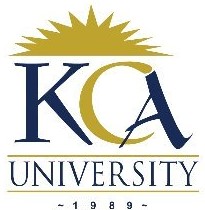
UNIVERSITY EXAMINATIONS: 2018/2019
EXAMINATION FOR THE DEGREES OF BACHELOR OF SCIENCE IN
IT/ BUSINESS IT/ APPLIED COMPUTING
BIT 1302A/BUSS 208/BAC 2105: E-COMMERCE
FULLTIME/ PART TIME/ DISTANCE LEARNING
ORDINARY EXAMINATIONS
DATE: AUGUST, 2019 TIME: 2 HOURS
INSTRUCTIONS: Answer Question One & ANY OTHER TWO questions.
QUESTION ONE (30 MARKS)
Tesco Case Study
Tesco, well known as Britain‟s leading food retail group with a presence also elsewhere in Europe,
Asia and the United States has also been a pioneer online. Tesco is generally recognized as the
world‟s largest online grocer and it has an annual turnover of £1 billion online in the UK and has
launched in other countries, internationally and is diversifying into non-food categories. In 2006,
Tesco launched Tesco Direct Web Site to rival catalogue retailers and got over 8,000 products
(beds and sofas through to kitchenware, electricals, cameras, bikes and golf clubs) available giving
customers more products at great Tesco prices than they have ever had access to before. Customers
can choose the product they want on a new website or from a new catalogue and then order in one
of three ways:
On-line via the tesco.com website
By phone
In selected stores at the new Tesco Direct desks
The Tesco.com site acts as a portal to most of Tesco’s products, including various non-food ranges
(for example, Books, DVDs and Electrical items under the „Extra‟ banner). As with other online
retailers, Tesco.com relies on in-store advertising and marketing to the supermarket’s Clubcard
loyalty scheme’s customer base to persuade customers to shop online. However, for non-food
goods the supermarket does advertise online using keyword targeted ads. For existing customers
Tesco used email marketing and direct mail marketing to provide special offers and promotions to
the customers. E-retailer Tesco.com uses as a „commitment-based segmentation‟ or „loyalty
ladder‟ which is based on recency of purchase, frequency of purchase and value to identify
categories of customer life cycle such as, “logged-on”, 81 developing”, “established”, “Dedicated”
etc, to target communication to customers. Tesco.com have a touch strategy which includes a
sequence of follow-up communications triggered after different events in a customer‟s lifecycle.
The growth of Tesco has been achieved through a combination of initiatives. Product range
development is one key area. In November 2004, Tesco’s introduced a music download service
and as the technology grows, it is hoped that Tesco.com turn into a digital download store of all
sorts, rather than just music. In 2007 it launched price comparison site Tesco Compare based on
analysis of customer demands
Questions
a) Identify the E-commerce model and E-tailing business model adopted by Tesco
(4 Marks)
b) In 2006, Tesco launched Tesco Direct to rival catalogue retailers. Identify the advantages
of this approach to (6Marks)
i. Tesco company
ii. Tesco Customers
c) One of the critical success factors of retailing is customer acquisition and retention. From
the case study identify and the advantages of the Marketing and Advertising approaches
used by Tesco company. (8 Marks)
d) Explain the different security measures that could be taken by Tesco to protect itself and
its online customers (6 Marks)
e) Why is user profile important in e-commerce? Describe three ways to compile user profile.
(6 Marks)
QUESTION TWO (20 MARKS)
a) Define the term digital economy. (2 Marks)
b) Explain;
i. The term electronic marketplace and outline its main components. (9 Marks)
ii. The three main functions of e-markets. (3 Marks)
c) Describe each of the following standards for e-payments: (6 Marks)
i. Secure socket layer (SSL)
ii. Transport Layer Security (TLS)
iii. Secure Electronic Transaction (SET)
QUESTION THREE (20 MARKS)
a) Using a well-labeled diagram, discuss the 3-tier architecture for developing e-commerce
infrastructure. (10 Marks)
b) Explain each of the following security issues: (10 Marks)
i. Authorization
ii. Authentication
iii. Auditing
iv. Nonrepudiation
v. Integrity
QUESTION FOUR (20 MARKS)
a) Explain the four (4) parties usually involved in e-payments. (8 Marks)
b) Define the term e-marketing. (2 Marks)
c) Outline any three characteristics of marketing communications that take place via the
Internet. (6 Marks)
d) Outline any two (2) tangible benefits of EDI. (4 Marks)
QUESTION FIVE (20 MARKS)
a) Internet and its use in E-Commerce have raised pervasive ethical, social and political issues
on a scale unprecedented for computer technology.
Explain the following ethical, social and political issues that have developed around ecommerce (6 Marks)
i. Information rights
ii. Property rights
iii. Governance
b) When confronted with a situation that seems to present ethical dilemma, outline how you
would analyze and reason about the situation (8Marks)
c) Outline three key factors for the success of an E-commerce business. (6 Marks)
